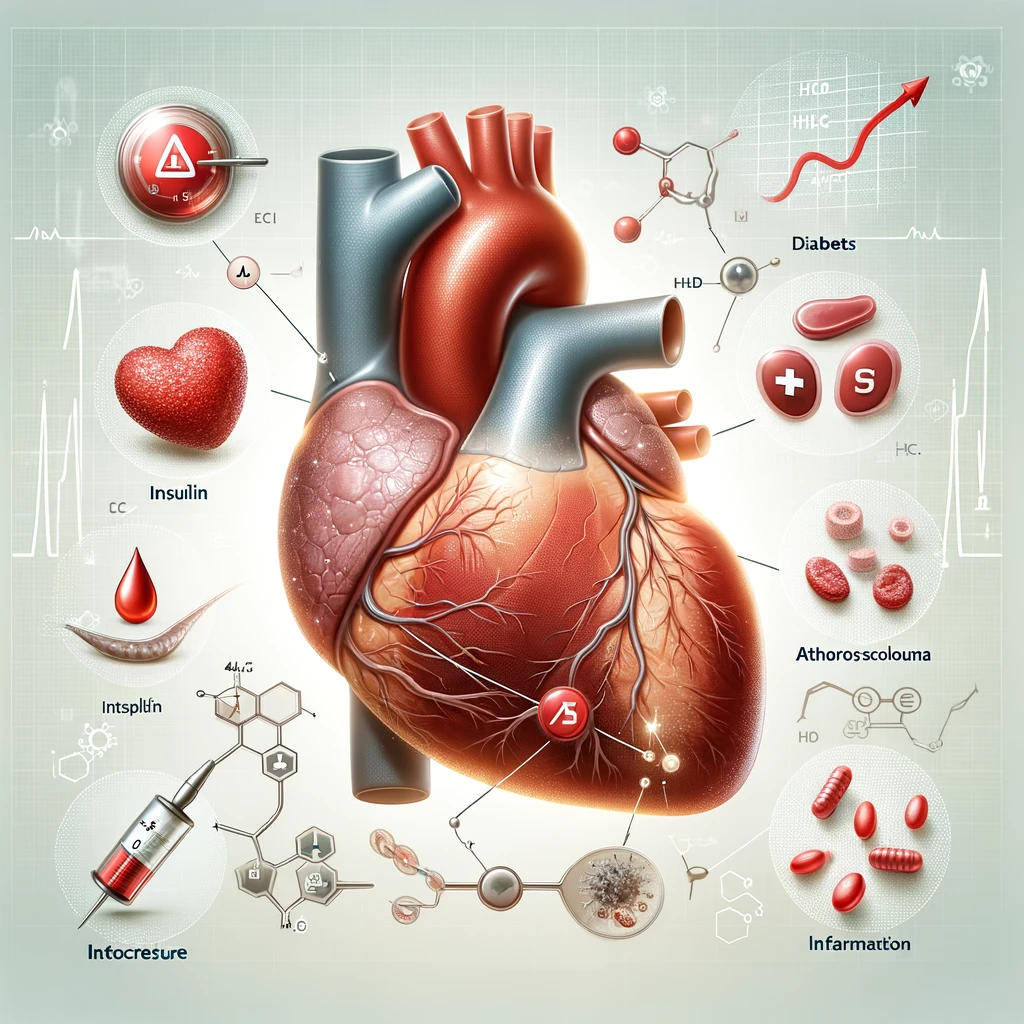
When discussing chronic health conditions, diabetes and heart disease often surface as significant concerns. However, the intricate relationship between these two ailments is not as widely understood as it should be. Beyond the well-known risks and symptoms, several lesser-known facts illuminate the profound connection between diabetes and heart disease. Understanding these nuances is crucial for effective prevention and management.
1. The Silent Progression of Cardiovascular Risk
One of the most alarming aspects of diabetes is its ability to silently increase cardiovascular risk. People with diabetes are more likely to develop atherosclerosis, a condition where arteries harden and narrow due to the buildup of plaque. This process often begins long before diabetes is diagnosed. Research has shown that even pre-diabetes, where blood sugar levels are higher than normal but not yet high enough to be classified as diabetes, can accelerate the onset of cardiovascular issues.
2. The Role of Advanced Glycation End Products (AGEs)
Advanced Glycation End Products (AGEs) are harmful compounds formed when protein or fat combines with sugar in the bloodstream. High levels of AGEs are found in individuals with diabetes and are known to contribute to the development of heart disease. AGEs promote inflammation and oxidative stress, which damage blood vessels and increase the risk of heart attacks and strokes. Reducing the intake of AGE-rich foods, such as processed and grilled meats, can help mitigate this risk.
3. The Impact of Diabetic Cardiomyopathy
Diabetic cardiomyopathy is a little-known condition directly linked to diabetes, independent of other cardiovascular risk factors like hypertension or coronary artery disease. This disorder affects the heart muscle’s structure and function, leading to heart failure. The exact mechanisms are still under study, but it is believed that chronic high blood sugar levels cause direct damage to the heart’s cells, leading to fibrosis (thickening and stiffening of the heart tissue).
4. Gender Differences in Heart Disease Risk
Gender plays a significant role in the diabetes-heart disease link, with women facing unique challenges. Women with diabetes are more likely to develop heart disease at a younger age compared to men. Additionally, diabetic women have a higher mortality rate from heart disease than their male counterparts. Hormonal differences and a higher prevalence of risk factors like obesity and high blood pressure in diabetic women may contribute to this disparity.
5. The Influence of Insulin Resistance
Insulin resistance, a hallmark of type 2 diabetes, also significantly impacts heart health. It not only impairs the body’s ability to regulate blood sugar but also affects lipid metabolism, leading to dyslipidemia—a condition characterized by abnormal levels of cholesterol and triglycerides in the blood. This combination accelerates the development of atherosclerosis and increases the likelihood of heart disease.
6. Microvascular Complications and Heart Health
While much attention is given to macrovascular complications (large blood vessel issues) in diabetes, microvascular complications (small blood vessel issues) are equally important. Diabetic microvascular disease affects the tiny blood vessels in the heart, impairing its function and leading to conditions such as microvascular angina. This type of chest pain occurs without the typical blockages seen in larger arteries, making it harder to diagnose and treat.
7. The Protective Role of Lifestyle Interventions
Though the link between diabetes and heart disease is formidable, lifestyle interventions can provide significant protection. Studies have shown that a combination of a healthy diet, regular physical activity, and weight management can reduce the risk of cardiovascular complications by improving blood sugar control and reducing inflammation. Surprisingly, even modest lifestyle changes can have profound impacts on heart health, underscoring the importance of comprehensive diabetes management.
Conclusion
The connection between diabetes and heart disease is complex and multifaceted, involving various physiological processes and risk factors. By understanding these lesser-known facts, individuals with diabetes and healthcare providers can better anticipate and mitigate the risks of heart disease. Emphasizing early detection, personalized treatment plans, and proactive lifestyle changes are essential steps toward breaking the link between these two chronic conditions. As research continues to unravel the intricate web connecting diabetes and heart disease, one thing remains clear: comprehensive care and informed awareness are key to improving outcomes for those affected.






